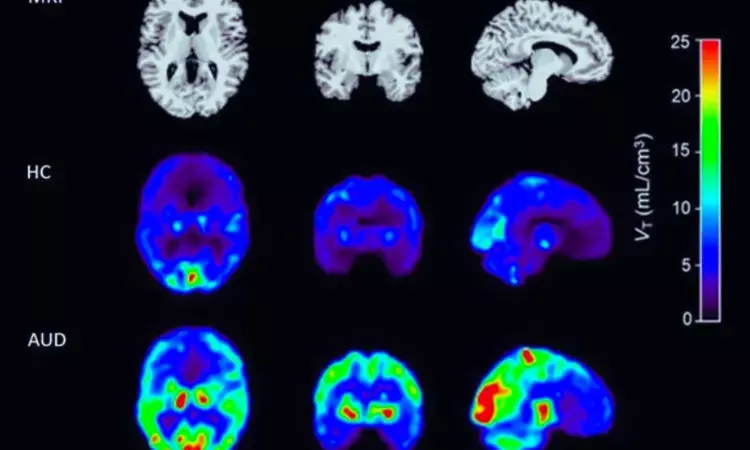- Home
- Medical news & Guidelines
- Anesthesiology
- Cardiology and CTVS
- Critical Care
- Dentistry
- Dermatology
- Diabetes and Endocrinology
- ENT
- Gastroenterology
- Medicine
- Nephrology
- Neurology
- Obstretics-Gynaecology
- Oncology
- Ophthalmology
- Orthopaedics
- Pediatrics-Neonatology
- Psychiatry
- Pulmonology
- Radiology
- Surgery
- Urology
- Laboratory Medicine
- Diet
- Nursing
- Paramedical
- Physiotherapy
- Health news
- Fact Check
- Bone Health Fact Check
- Brain Health Fact Check
- Cancer Related Fact Check
- Child Care Fact Check
- Dental and oral health fact check
- Diabetes and metabolic health fact check
- Diet and Nutrition Fact Check
- Eye and ENT Care Fact Check
- Fitness fact check
- Gut health fact check
- Heart health fact check
- Kidney health fact check
- Medical education fact check
- Men's health fact check
- Respiratory fact check
- Skin and hair care fact check
- Vaccine and Immunization fact check
- Women's health fact check
- AYUSH
- State News
- Andaman and Nicobar Islands
- Andhra Pradesh
- Arunachal Pradesh
- Assam
- Bihar
- Chandigarh
- Chattisgarh
- Dadra and Nagar Haveli
- Daman and Diu
- Delhi
- Goa
- Gujarat
- Haryana
- Himachal Pradesh
- Jammu & Kashmir
- Jharkhand
- Karnataka
- Kerala
- Ladakh
- Lakshadweep
- Madhya Pradesh
- Maharashtra
- Manipur
- Meghalaya
- Mizoram
- Nagaland
- Odisha
- Puducherry
- Punjab
- Rajasthan
- Sikkim
- Tamil Nadu
- Telangana
- Tripura
- Uttar Pradesh
- Uttrakhand
- West Bengal
- Medical Education
- Industry
PET scans reveal key molecular driver of stress and addiction in people with alcohol use disorder

USA: In a recent study published in Neurobiology of Stress, the researchers used PET imaging to visualize levels of a brain enzyme that generates cortisol in response to stress in people with alcohol use disorder (AUD) and compared findings to healthy controls.
Preliminary findings suggested that individuals with AUD have higher [Hydroxysteroid dehydrogenase type 1 (beta-11 HSD1)] availability than healthy individuals, in brain regions specific to the ‘dark side of addiction.'
For the first time, PET scans have revealed what may be a key molecular driver of stress and addiction in people with alcohol use disorder, according to the researchers.
The group of researchers at Yale University in New Haven, CT, used PET imaging to visualize levels of a brain enzyme that generates cortisol in response to stress in people with AUD and compared findings to healthy controls; the results established a foundation for new research.
Regions specific to the dark side of addiction include d the hypothalamic-pituitary-adrenal (HPA) axis, a system that regulates the body's stress response. Preclinical studies have shown that exposure to chronic alcohol increases levels of brain cortisol, for instance, and that this hyperreactivity may blunt the ability of the HPA axis to respond to stress, the research group noted.
Results from this preliminary research have been mixed, and in 2019 researchers developed a PET radiotracer that binds to an enzyme involved in cortisol activity (beta-11 HSD1); in the study, Terril L. Verplaetse, Yale School of Medicine, New Haven, CT, USA, and colleagues used the tracer to visualize this enzyme activity for the first time in humans.
For this purpose, the group imaged nine individuals with moderate to severe AUD (four women, five men; mean age = 38 years) and 12 healthy controls (four women, eight men; mean age = 29 years).
People with AUD consumed 52.4 drinks per week with 5.8 drinking days per week, while healthy controls consumed 2.8 drinks per week with 1.3 drinking days per week.
Key findings:
- PET scans revealed 41.7% higher overall beta-11 HSD1 activity in the prefrontal-limbic circuit in the AUD group compared to the healthy control group.
- The mean F-18 AS2471907 radiotracer values were higher in the AUD group by 47% in the amygdala, 36% in the caudate, 52% in the anterior cingulate cortex, 39% in the hippocampus, and 36% in the ventromedial prefrontal cortex (vmPFC).
- Higher brain availability of the cortisol-regenerating enzyme beta-11 HSD1 in people with AUD and higher vmPFC beta-11 HSD1 availability is related to greater alcohol consumption. The researchers hypothesized that this higher beta-11 HSD1 availability in the brain may drive a blunted response to stress in individuals with AUD, which leads to increased vulnerability to excessive use.
The researchers noted the findings in this study are “first-in-kind” and that there will be a need for future studies to elucidate these mechanisms.
“These findings set the foundation for future hypotheses on mechanisms related to HPA axis function in this population,” the researchers concluded.
Reference:
Verplaetse, T. L., Hillmer, A. T., Bhatt, S., Rusowicz, A., Li, S., Nabulsi, N., Matuskey, D., Huang, Y., McKee, S. A., & Cosgrove, K. P. (2024). Imaging a putative marker of brain cortisol regulation in alcohol use disorder. Neurobiology of Stress, 100609. https://doi.org/10.1016/j.ynstr.2024.100609
Dr Kamal Kant Kohli-MBBS, DTCD- a chest specialist with more than 30 years of practice and a flair for writing clinical articles, Dr Kamal Kant Kohli joined Medical Dialogues as a Chief Editor of Medical News. Besides writing articles, as an editor, he proofreads and verifies all the medical content published on Medical Dialogues including those coming from journals, studies,medical conferences,guidelines etc. Email: drkohli@medicaldialogues.in. Contact no. 011-43720751


